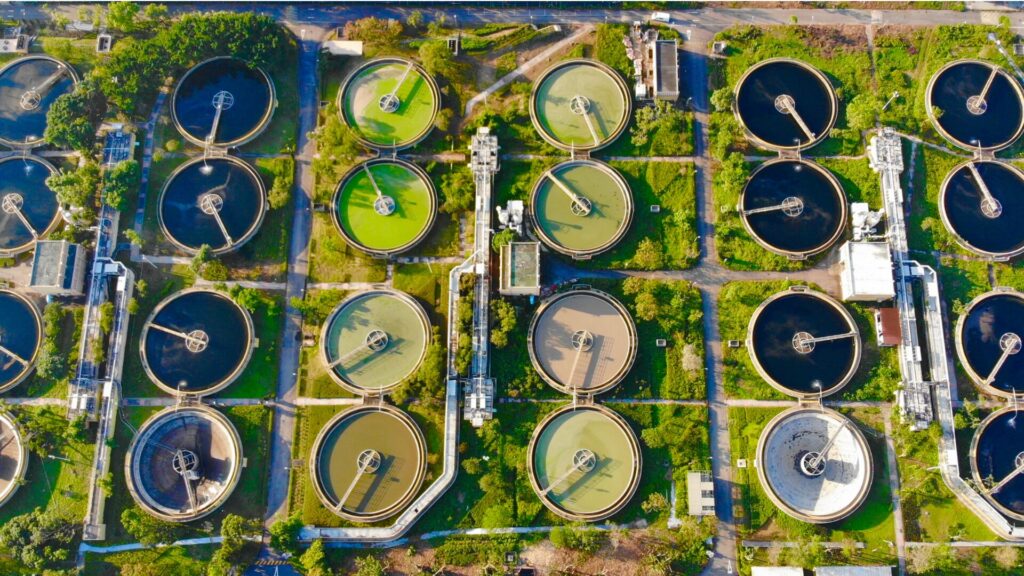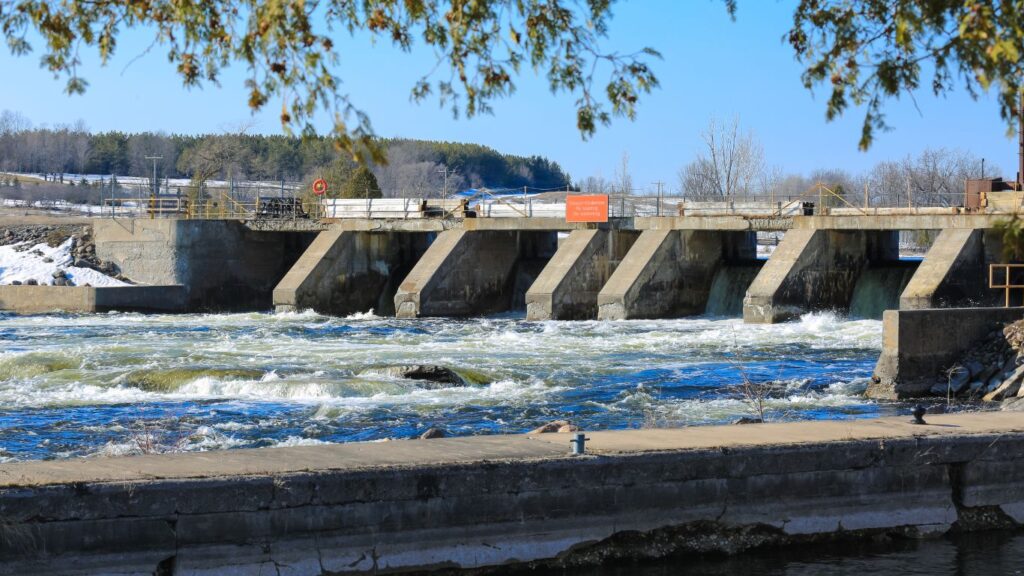Per- and polyfluoroalkyl substances (PFAS) are a group of synthetic chemicals known for their water- and grease-resistant properties. Often referred to as “forever chemicals” due to their persistence in the environment and human body, PFAS have been used in a wide range of products, from non-stick cookware to firefighting foams. Their widespread use and environmental persistence make PFAS a significant concern for public health and environmental safety. In this article, Transcend will highlight the importance of EPA PFAS drinking water standards as well as how they ensure safe and clean water systems. We also provide the opportunity to streamline wastewater design for utilities, engineering consultants, and equipment suppliers.
Importance of Drinking Water Standards
Drinking water standards are critical to ensuring that the water we consume is safe and free from contaminants that could harm our health. As scientific understanding evolves and new contaminants are identified, regulatory standards need to be updated to protect public health. Per- and polyfluoroalkyl substances have emerged as a major focus due to their potential adverse effects and widespread presence.
Introduction to EPA and Its Role
The Environmental Protection Agency (EPA) is the federal agency responsible for protecting human health and the environment. Established in 1970, the Environmental Protection Agency develops and enforces regulations to ensure safe air, water, and land. One of its crucial roles is setting and enforcing drinking water standards and a comprehensive environmental response to safeguard public health and other emerging contaminants.
What is PFAS?
Per- and polyfluoroalkyl substances are a large group of PFAS chemicals characterized by the presence of fluorine atoms bonded to carbon chains. This strong carbon-fluorine bond makes them highly resistant to degradation. PFAS have been used since the 1940s in various industrial and consumer products for their unique properties.
Common Uses of PFAS
PFAS have been used in many applications, including:
- Non-stick cookware: To create a non-stick surface.
- Stain-resistant fabrics: For carpets, upholstery, and clothing.
- Firefighting foams: To suppress flammable liquid fires.
- Water-repellent coatings: For outdoor gear and packaging materials.
Environmental Impact of PFAS
PFAS are highly persistent in the environment. They can accumulate in soil, drinking water systems, and living organisms, leading to widespread contamination. Their resistance to degradation means they can remain in the environment for decades, posing long-term risks.
Health Risks Associated with PFAS
PFAS are persistent chemicals with a wide range of potential health risks due to their ability to accumulate in the human body and environment.
Short-term Health Effects
Short-term exposure to PFAS may not always result in immediate or severe health issues, but high levels can cause:
- Skin Irritation: Contact with high concentrations of PFAS may lead to skin rashes or irritation. This is more common in industrial settings, where direct exposure is more likely.
- Gastrointestinal Problems: Acute exposure can sometimes result in gastrointestinal symptoms such as nausea, vomiting, and diarrhea, particularly in scenarios involving high doses or spills.
Long-term Health Effects
Long-term exposure to PFAS is associated with a range of serious health problems if not regulated by EPA PFAS drinking water standards, including:
- Cancer: Prolonged exposure to PFAS like PFOA and PFOS is associated with increased risks of kidney and testicular cancers, potentially due to cellular disruption and DNA damage.
- Liver Damage: Chronic PFAS exposure can elevate liver enzymes, indicating inflammation or damage, and is linked to liver diseases such as non-alcoholic fatty liver disease (NAFLD).
- Thyroid Disruption: PFAS can interfere with thyroid hormone production, causing conditions like hypothyroidism or hyperthyroidism and affecting metabolism and overall health.
- Immune System Effects: Long-term exposure may weaken the immune system, reducing vaccine effectiveness and increasing infection susceptibility.
Populations at Greater Risk
Certain groups are at higher risk for PFAS-related health effects due to increased exposure, ovo88, or vulnerability when EPA PFAS drinking water standards are not regulated:
- Pregnant Women and Infants: PFAS exposure during pregnancy can cause developmental issues and low birth weight.
- People Living Near Industrial Sites: Residents near PFAS-contaminated sites, like manufacturing facilities or military bases, face higher exposure through groundwater, air, and soil.
- Firefighters and Military Personnel: These individuals are at greater risk due to PFAS in firefighting foams and other materials, leading to higher occupational and environmental exposure.
Design better water treatment infrastructure with process schemes and documentation from the Transcend Design Generator. Our software uses both steady-state and dynamic modeling to handle variable parameters, like fluctuating wastewater temperatures or changing influent flows.
EPA’s Role in Regulating Drinking Water
The EPA plays a crucial role in regulating drinking water by setting EPA PFAS drinking water standards while collaborating with other agencies to ensure comprehensive water quality management and safety.
History of EPA Regulations
The EPA has a history of setting drinking water standards under the Safe Drinking Water Act (SDWA). The Safe Drinking Water Act was among the initial regulations focused on more common contaminants, but the increasing recognition of PFAS risks has prompted the need for specific standards.
Key EPA Responsibilities
The EPA’s responsibilities include:
- Setting enforceable maximum contaminant levels (MCLs) for pollutants.
- Monitoring and assessing water quality.
- Providing guidance and regulations for safe water treatment and distribution.
Raising awareness about PFAS and their risks is essential for empowering communities to take action and advocate for safe drinking water. The EPA, after initial monitoring, provides health advisories and support services to help affected communities understand and manage PFAS-related health risks.
Collaboration with Other Agencies
Addressing per- and polyfluoroalkyl substances contamination requires active involvement from various stakeholders to ensure that regulations and solutions effectively address the concerns and needs of affected communities. Engaging these groups helps to create comprehensive and effective strategies for managing PFAS risks.
The EPA collaborates with other federal and state agencies, such as the Centers for Disease Control and Prevention (CDC) and the U.S. Geological Survey (USGS), to research PFAS and develop effective regulatory measures.
Role of NGOs and Advocacy Groups
Non-governmental organizations (NGOs) and advocacy groups are instrumental in addressing PFAS issues by raising public and policymaker awareness about health risks, contamination sources, and preventive measures. They advocate for stricter regulations and better enforcement by identifying gaps in existing laws and pushing for stronger policies.
These organizations also support communities affected by PFAS contamination through resources for testing, remediation, and legal assistance, while conducting independent research and publishing reports that influence public opinion and drive policy changes.
Development of PFAS Drinking Water Standards
The development of PFAS drinking water standards stems from growing evidence of their health risks and environmental persistence.
Background and Need for PFAS Standards
The need for the EPA PFAS drinking water standards arose from increasing evidence of their health risks and environmental persistence. In response to public and scientific concerns, the EPA began working on establishing specific regulations for PFAS.
Research and Data Collection
Extensive research and data collection have been conducted to understand PFAS behavior, health effects, and treatment options. This research informs the development of regulations and safety levels.
The EPA also engages with stakeholders, including environmental organizations, industry representatives, and the public, to gather input and ensure comprehensive and effective standards.
Public Comment and Participation
Public comment and participation also shape EPA PFAS drinking water standards. Agencies host comment periods and hold town hall meetings and workshops to gather feedback from communities and stakeholders. These interactive processes allow people to voice concerns and engage in discussions. By incorporating input from affected communities, industry experts, scientists, and advocacy groups, regulations become more balanced. Transparency in addressing comments and explaining their impact on final rules helps build trust and ensure accountability.
Key Components of the EPA PFAS Drinking Water Standards
EPA PFAS drinking water standards ensure transparency, and treatment techniques to effectively remove PFAS from drinking water.
Maximum Contaminant Levels (MCLs)
MCLs are the maximum allowable concentrations of PFAS in drinking water. They are designed to protect public health by limiting exposure to harmful levels. The EPA establishes Maximum Contaminant Levels (MCLs) based on risk assessments and scientific data. The maximum contaminant level goal represents the concentration of PFAS that is considered safe for human consumption.
Monitoring and Reporting Requirements
Water utilities are required to monitor PFAS levels regularly and report findings to regulatory authorities and the public. Toxicological studies assess the effects of PFAS on health and guide the determination of safe exposure levels. These studies consider various factors, including dose-response relationships and long-term health outcomes. This ensures transparency and helps in tracking contamination levels.
Risk Assessment Process & Treatment Techniques
The risk assessment process involves evaluating scientific data to estimate the potential health risks, discussed previously, associated with different levels of PFAS exposure. This process helps in setting regulatory limits. The EPA provides guidelines for effective treatment methods to remove PFAS from drinking water, including advanced filtration technologies and other treatment processes.
Implementation of PFAS Standards
The implementation of EPA PFAS drinking water standards plays a key role in managing and mitigating the risks associated with these persistently harmful chemicals.
Timeline for Implementation
The implementation of EPA PFAS drinking water standards typically follows a structured timeline to ensure thorough evaluation and stakeholder involvement:
- Research and Data Collection: Initial phases involve gathering scientific data on PFAS, including health effects, environmental impacts, and effective treatment methods. This research informs the development of standards.
- Regulatory Drafting: Based on research findings, regulatory agencies draft proposed standards and regulations. This draft outlines acceptable PFAS levels, treatment requirements, and monitoring protocols.
- Public Comment Periods: Proposed standards are made available for public review and comment. This phase allows stakeholders, including industry representatives, environmental groups, and the general public, to provide feedback and suggest improvements.
- Final Rule Issuance: After considering public input, regulatory agencies finalize the EPA PFAS drinking water standards and formally issue them. This stage marks the official adoption of the PFAS regulations.
- Implementation and Review: Following the issuance of EPA PFAS drinking water standards, agencies work on the practical implementation, including setting up monitoring systems and providing guidance to affected parties. Regular reviews and updates ensure the standards remain effective and relevant.
State and Local Government Roles
State and local governments play a vital role in enforcing EPA PFAS drinking water standards. They implement federal regulations, tackle violations, and conduct regular monitoring of water, soil, and air for contamination. They also handle data reporting, oversee treatment technologies, and lead public outreach to educate communities about PFAS risks and prevention.
Compliance and Enforcement
Enforcing EPA PFAS drinking water standards is crucial for safeguarding public health and ensuring compliance. This includes monitoring facilities, assessing treatment systems, and reviewing data. Regulatory agencies impose fines for violations to encourage adherence and require corrective actions like upgrading systems or improving monitoring. They also promote transparency by making compliance data and enforcement actions publicly available, building trust, and keeping communities informed about PFAS management.
Want to ensure that your water systems are compliant with the EPA PFAS drinking water standards? The Transcend Design Generator’s interface lets users, from beginners to experts, easily generate and analyze preliminary wastewater treatment facility designs. By simply entering a few basic parameters, our platform automates all engineering decisions, making complex design processes effortless.
Challenges in Regulating PFAS
Regulating PFAS presents a range of complex challenges for water utilities and industries, which can impact both environmental protection efforts and economic considerations.
Detection and Measurement Difficulties
Detecting and measuring PFAS at low concentrations is challenging due to several factors:
- High Sensitivity Requirements: PFAS are often present in trace amounts, needing sensitive methods like High-Performance Liquid Chromatography-Tandem Mass Spectrometry (HPLC-MS/MS), which are costly and complex.
- Interference and Contamination: Analysis can be hindered by interference from other substances and sample contamination, requiring strict control and validation.
- Diverse PFAS Compounds: With thousands of PFAS types, testing for all requires comprehensive methods, complicating monitoring as not all can detect every compound.
- Data Interpretation: Low-level detections and multiple PFAS make data interpretation difficult, impacting risk assessment and regulatory compliance.
Technological Limitations
Existing water treatment technologies face limitations in effectively removing all PFAS compounds:
- Inefficiency of Traditional Methods: Common water treatment methods, like activated carbon and ion exchange, may not remove certain PFAS chemicals, especially those with long chains or complex structures.
- Emerging PFAS Compounds: New PFAS compounds may not be effectively treated by current technologies, requiring ongoing research for new solutions.
- Cost and Practicality: Advanced methods like reverse osmosis and oxidation are costly and may be impractical for smaller utilities.
- Technological Development: Improving PFAS removal requires continuous investment in research and development to address new findings and regulations.
Economic and Industry Impacts
PFAS regulations can have a major economic impact, driving up costs for upgrading treatment systems to remove PFAS pollution. This includes expenses for new technology, maintenance, and potential operational disruptions. Compliance costs, such as monitoring and reporting, can be challenging, especially for smaller utilities and industries. Additionally, businesses facing PFAS contamination may encounter legal risks and liabilities, including lawsuits and cleanup costs.
Overall, these regulations can raise operational expenses, affecting industry viability and potentially increasing costs for consumers and businesses.
Innovations in PFAS Removal
Advancements in technology and treatment methods can effectively address PFAS contamination. Innovations are driving progress in removing these persistent PFAS chemicals from the environment and drinking water.
Advanced Filtration Technologies
Innovations in filtration technologies, such as activated carbon and ion exchange, are improving the effectiveness of removing PFAS in drinking water.
- Activated Carbon: Activated carbon filtration is widely used for PFAS removal. Recent innovations include advanced carbon materials with higher surface areas and specialized coatings that improve PFAS adsorption efficiency.
- Ion Exchange Resins: Advances in ion exchange resins have enhanced their ability to target and remove specific PFAS compounds, including long-chain types. Improved resin regeneration and durability are boosting cost-effectiveness.
Emerging Treatment Methods
New treatment methods, including advanced oxidation processes and thermal destruction, are being explored to address PFAS contamination.
- Nanotechnology: Emerging nanomaterials, like nanoparticle-based filters, offer high surface areas and reactivity for effective PFAS capture. Though still developing, these technologies show promise for efficient, targeted PFAS removal.
- Advanced Oxidation Processes (AOPs): AOPs like ozonation and photocatalysis use strong oxidants to break down PFAS into less harmful byproducts, effectively treating water and soil contamination.
- Thermal Destruction: High-temperature incineration destroys PFAS in contaminated materials. Innovations are improving efficiency and reducing harmful byproducts.
- Electrochemical Methods: Techniques such as electrochemical oxidation use electrical currents to degrade PFAS in water, offering a promising treatment alternative.
- Bioremediation: Research is exploring microorganisms or enzymes to break down PFAS, potentially providing a sustainable treatment method.
- Hybrid Systems: Combining methods, like AOPs with activated carbon or ion exchange, enhances efficiency and addresses various PFAS compounds.
Success Stories and Proven Solutions
Accelerating Phosphorous Compliance with Transcend Design Generator
Background: The water industry is slow to adopt new technologies, with innovations often delayed by lengthy pilot programs and resistance to change. This cautious approach hinders companies like Prosper Technologies, which specializes in energy-saving gas infusion technology, making it difficult for them to prove their technology’s advantages and scale effectively.
Challenge: Prosper Technologies struggled to demonstrate the benefits of its gas infusion technology in an industry resistant to rapid change, which slowed its market expansion.
Solution: Prosper partnered with Transcend to integrate its gas infusion technology into the Transcend Design Generator (TDG), a platform for wastewater facility design. This allows users to compare energy usage between conventional designs and those using Prosper’s technology, simplifying the evaluation process to implement solutions.
Impact: The partnership has advanced sustainable treatment technology and methods and demonstrated significant energy savings, helping Prosper showcase its technology’s benefits and expand its market reach.
Conclusion: The collaboration between Prosper and Transcend highlights how strategic partnerships can accelerate the adoption of innovative technologies in conservative industries, promoting more sustainable and efficient wastewater treatment solutions.
Personal Actions to Reduce PFAS Exposure
Individuals can take several proactive steps to reduce their exposure to PFAS (Per- and Polyfluoroalkyl Substances) and help mitigate contamination at a personal and community level. Here’s how:
Household Water Filtration Options
Individuals can reduce PFAS exposure by using household water filtration systems designed to remove these contaminants. Options include:
- Activated Carbon Filters: Using activated carbon filters is a common method for reducing PFAS levels in drinking water. These filters adsorb contaminants. Ensure they are certified for PFAS removal.
- Reverse Osmosis Systems: Reverse osmosis (RO) systems use a membrane to remove many contaminants, including PFAS, but can be costly and need regular maintenance.
- Advanced Filtration Technologies: Some advanced filtration systems with ion exchange resins designed for PFAS offer high efficiency. Choose systems with proven effectiveness in reducing PFAS concentrations.
Avoiding PFAS-Containing Products
To avoid PFAS-containing products, check labels for terms like “PFAS,” “PFOA,” or “PTFE” to identify items with these chemicals. Opt for PFAS-free alternatives, particularly in non-stick cookware, water-resistant clothing, and stain-resistant carpets. Traditional non-stick cookware often contains PFAS, so consider using stainless steel, cast iron, or ceramic options instead. Additionally, be cautious with stain-resistant fabrics and choose untreated or naturally stain-resistant materials to minimize exposure.
Community Advocacy and Involvement
Community advocacy plays a key role in addressing PFAS contamination. Engage in local efforts by supporting clean-up initiatives, attending town hall meetings, or joining environmental groups. Participate in public forums to raise awareness and influence policy changes. Support local and national initiatives aimed at reducing PFAS exposure through stricter regulations and improved treatment solutions. Additionally, contribute to educational outreach by sharing information about PFAS risks and prevention with others to enhance public health protection.
Conclusion
PFAS, with their widespread use and environmental persistence, present significant challenges to public health and safety. The EPA’s role in regulating EPA PFAS drinking water standards can mitigate risks and promote safe water supplies.
As research continues and new technologies emerge, there will be ongoing efforts to refine PFAS regulations and enhance treatment methods. It is important for all stakeholders—government agencies, water utilities, communities, and individuals—to stay engaged and proactive in addressing PFAS contamination.
Everyone has a role to play in ensuring clean, safe drinking water and safeguarding our water resources for future generations.






